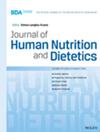Barriers to Healthy Eating and Influences on the Dietary Patterns and Eating Behaviours of 18–36-Month-Old Children in Ireland
Abstract
Background
Young children have high nutritional requirements relative to their size and energy intakes, yet inadequate nutrient intakes are widespread. Factors impacting the ability of caregivers to provide nutritionally adequate diets to young children are understudied.
Objective
To evaluate key influences on the dietary patterns and eating behaviours of young children in Ireland.
Methods
Parents and guardians with a child aged 18–36 months were invited to complete a self-administered online survey. The 103-question survey was delivered across 5 subsections (Socio-Demographics, Parental Nutrition Knowledge, Parental Feeding Practice, Child Food Fussiness, Barriers to Healthy Eating and Dietary Patterns). Adherence (%) to current Dietary Guidelines for 1–5-year-olds and the Children's Food Pyramid were assessed using a food frequency approach to create an adherence score based on 7 components, including consumption of red and processed meat, fish, dairy, fruit and vegetables, confectionary and beverages.
Results
We received 1158 responses, mostly from mothers (96.3%) born in Ireland (85.5%), of whom 80.1% had at least a primary degree. The mean (±SD) age of children was 26.2 ± 5.8 months and 54.6% were enrolled in an early years service, of which 74.3% provided food. The mean (±SD) dietary guideline adherence score among children was 55.5% ± 19.7%. The Children's Food Pyramid was recognised by 76.3% of parents and mean (±SD) nutrition knowledge score was 57.9% ± 14.6%, which was associated with dietary guideline adherence (r = 0.122, p < 0.001). Reported barriers to healthy eating were “food fussiness” (49%), “time to prepare healthy foods” (47%) and “provision of unhealthy foods by caregivers outside the home” (47%). Moderate to severe fussy eating was noted in 36% of children and food fussiness was associated with lower dietary guideline adherence (r = −0.172, p < 0.001). The children of respondents (13.1%) following restrictive diets (e.g., vegetarian, gluten-free) had a lower than average dietary guideline adherence score (50.2% ± 18.3% p < 0.001).
Conclusions
Many associated factors influence the dietary patterns of young children. Improved understanding of these influences may help to guide the design of targeted nutrition supports and education programmes for this age group.


 求助内容:
求助内容: 应助结果提醒方式:
应助结果提醒方式:


